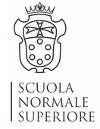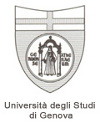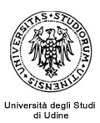Spreading visual culture: contemporary art through periodicals, archives and illustrations.
The project
The National Project, lasting three years, is divided into four research Units: Scuola Normale Superiore of Pisa (leader Giorgio Bacci, who is also the national coordinator), University of Udine (leader Denis Viva), University of Siena (leader David Lacagnina), University of Genoa (leader Veronica Pesce).
The research aims to address contemporary art in innovative ways, bringing together different humanistic fields: not only art history, but also fashion history, sociology, semiotics and, of course, literature and publishing history. Therefore, contemporary art seen as a clue to understanding society nowadays, intending the historical period between the late nineteenth century and the 1980s.
If the “terminus ante quem” is motivated by the critical-historical needs, the start date has been identified in the birth of the modern mass society, with the rapid growth of the media, the emergence of disruptive artistic movements and their approach with a different conception of the image.
Following page...
Continuing to speak about the dialogue between “high” and “low” visual culture, the end of the nineteenth century is also the period of the last “global” (in the sense that involves all the artistic sections and all the aspect of life) movement: the Art Nouveau style, which, though already extensively investigated, will be studied according to new perspectives, combining the digital analysis of a fundamental periodical such as «Riviera Ligure» (profiting from the collaboration with the Mario Novaro Foundation which not only preserves the whole magazine, but also the extensive correspondence between Novaro and writers and artists like Plinio Nomellini), with the digital cataloguing of a more technical magazine, «Risorgimento Grafico», and the archive of the original drawings (19th-20th centuries) of the publisher Bemporad/Giunti. A rich dialogue, which starts with Liberty art and comes to embrace figurative and wider cultural fields, is thus created.
On the one hand there is the possibility to investigate (through the work of the Genoa Unit) «Riviera Ligure» (which, significantly, was born in 1895 as a commercial bulletin of Sasso Olive Oil Company) in its entirety profiting from the archive (strong element of novelty), and, on the other hand, the opportunity to study in real terms the impact of the “high” artistic styles on the editorial, mass production. The archive of the publisher Bemporad/Giunti (digitalized by the Normale Unit) still preserves a priceless heritage of original drawings (from the end of the 19th century to the 1950s), by some of the leading artists-illustrators of the time: Attilio Mussino, Antonio Rubino, Aleardo Terzi, etc.
«Risorgimento Grafico» (studied again by the Normale Unit) will be really useful as a term of comparison, housing theoretical debates, presenting the work of important illustrators (in some cases the same encountered in the archive of Bemporad, allowing the reader to follow directly the critical-historical debate) and opening to suggestive reflections about the impact of the new social and visual communication systems on the framework of the city (e.g. Cesare Ratta, speaking of billboards, writes that the roads have become “a permanent exhibition”). «Risorgimento Grafico» (1902-1941) goes through a complex Italian period, finishing its adventure during the Second World War. In the same year, and sometimes disagreeing with the Milanese periodical, Vincenzo Pica developed his critical work, revealing himself as a “European” personality, thanks to his attention to the graphics and to the potential of the new communication systems. Again, the “major” arts dialogue with the “minor” arts, and Pica, primarily through the pages of «Emporium», presented the greatest exponents of international graphics to the Italian public. The digitalization, just completed by the Laboratory of Visual Arts, of «Emporium», will provide a secure base for the researches, full of novelties, which the Siena Unit will develop. In particular, an extensive bibliographical and archival survey will start, reconstructing the critical work of Pica. In this light, with regard to the thirties and forties, the possibility to access the private archive of the art dealer Stefano Cairola, now kept at the Faculty of Humanities of the University of Siena, takes on particular importance. As a moment of strong caesura, the period after 1945 presents the scholar with different problems: the periodicals (studied by the Udine Unit) are, as for the previous period, an indispensable historical and cultural steering compass. The publishing trajectory of the periodicals develops, since 1945, according to two major historical phases. From 1945 to 1965 it is characterized by an “exo-editorial” activism, with a series of publishing initiatives outside the common systems of distribution: the protagonists are the artists and critics themselves involved in the debate, who choose the magazine as a tool not compromised by editorial or market agreements.
| Objectives | The project (1, 2 , 3 ,4 , 5 ,6) | Hide |















